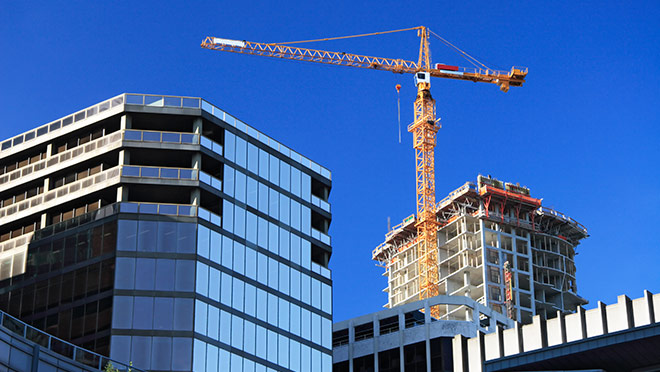New construction incentives shift from kWh to CO2e

CleanBC's new-look program leans on increasing electrical load to reduce carbon emissions
Where once BC Hydro's New Construction Program incentives were calculated by kilowatt-hour savings, the province's CleanBC Commercial New Construction Program is all about saving tonnes of greenhouse-gas emissions.
"That fundamental eligibility requirement around energy efficiency isn't there anymore," says Oscar Ceron, who manages BC Hydro's New Construction Program and administers the CleanBC offer. "Instead, there's a metric of lifetime GHG savings."
The CleanBC Commercial New Construction Program focuses on the design and construction of new high performance, more electrified buildings that encourage customers to switch from high carbon fuels to clean electricity for a reduction of greenhouse gas (GHG) emissions. That amounts to a huge emphasis on space and hot water heating, and it involves a reframing of conversations with customers.
CleanBC New Construction Incentives are significant: Up to $15,000 toward a building energy study, and up to $500,000 in capital incentives based on lifetime per-tonne calculations of GHG savings. With incentives very much tied to building step codes that vary from building type to building type, and from one municipality to another, it's up to Alliance members to quickly get acquainted with the new-look program.
"As an Alliance member, if you familiarize yourself with the consultant orientation manual and the energy modelling guidelines, you can position yourself as someone who can help a customer navigate the program," says Ceron.
A more efficient building is better equipped to switch to electricity
The new-look program is still all about efficiency, as it makes no sense to construct a building that leaks air and requires large heating capacity to keep it warm in winter, cool in the summer. And that's why one of B.C.'s first "low-carbon electrification" initiatives is tied to a program that's all about building better from the ground up.
"If you design a building that has excellent insulation and airtight walls, you're going to reduce the need for any fuel source internally," says Ceron. "In theory, you could do these things and still heat with natural gas. But we want you to use efficient electricity in the place of natural gas, which has a higher footprint."
Same building, different incentives, depending on location
Alliance members will need to get up to speed on local building codes to determine what's required to qualify for GHG reduction incentives under the CleanBC Commercial New Construction Program. Ceron says that two identical buildings across the street from each other may have different code requirements if that street is the border between two municipalities.
The CleanBC site has in-depth information on the code requirements for the program. But if you digest those documents and still have questions, don't hesitate to call BC Hydro.